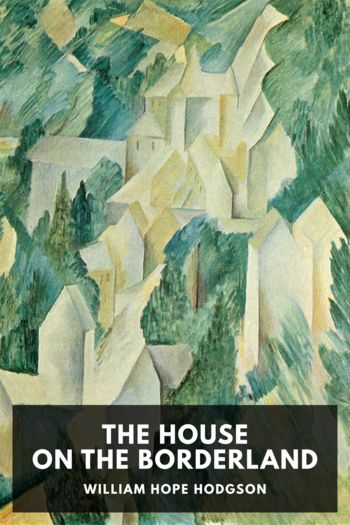Gluck by Diana Souhami (most interesting books to read .TXT) 📗

- Author: Diana Souhami
Book online «Gluck by Diana Souhami (most interesting books to read .TXT) 📗». Author Diana Souhami
Gluck stayed in bed for a month and wrote notes collected in a folder called ‘Book’ about her theories of painting – about being true to vision, receptive to the identity of the subject painted and painstaking in the execution of work. Though repetitive and oratorical – she urges her reader never to work simply for money or in a way that feels compromised or false – the core of her ideas (see pages 42, 54, 89 and 192) is profound and heartfelt.
She cancelled the Copeland portrait, which would have brought her in a hundred guineas, and went instead, after a month of complete rest, to Bournemouth for a week in April 1940 with Nesta and Mrs Sawyer. In her diary she noted seeing a rainbow, reading Blake, restful days and not sleeping well when she and Nesta were given hotel rooms on different floors.
By June she felt strong enough for what was intended to be the first of three portraits, husband, wife and son, of the Maufes. ‘Three small portraits to go with their family ones – one of the most honouring commissions I have ever received.’1 She began with Edward. The other two did not get done. Though Maufe had won the competition for Guildford Cathedral in 1931, the foundation stone was not laid until 1936. The war then put a stop to building, and the Cathedral was not consecrated until 1961. Gluck used his winning signed sketch as the background ‘brainwave’ to her picture and shows him drawing the plan of the cathedral on his worktable. She captured his tall, willowy elegance and episcopal looks. He and Prudence were accomplished dancers and he was said to be charming, exquisitely mannered and shy. The joke ran that he was so shy that on arriving at a party and announcing ‘I’m Maufe’, his host’s reply was ‘what already?’ After Maufe, Gluck painted a delicate flower piece – white convolvulus in a stemmed glass. It took her five weeks of solid work. The flowers wilted within hours and she scoured the hedgerows for replacements. She painted it in the summer of 1940 at the time of the blitz on Britain, air raids and dog fights in the sky. She regarded it as one of her best flower paintings. It was bought by the owner of Millers Mead, a Colonel Hale, whose son eventually took it with him to Rhodesia.
Though uprooted and unsettled by the war, Gluck was neither deflected from her artistic vision nor made afraid. ‘People say to me, “what dreadful times to live in …” I don’t think so. They are inspiring and spiritual times, earthly and material values not meaning a damn thing any more, because they are so insecure.’ She saw an enemy plane brought down in flames over the downs, heard the ‘goings on’ of bombing all around, and went to air-raid practice, a first-aid course, and jam-making mornings at the Village Institute. The hens went broody and supplied her with twenty-seven chicks and the bees seemed regularly to sting her and Nesta, but provided them with honey too. Rabbits were added to the home farm, eggs pickled, vegetables bottled. The next set of servants, the Uptons, left at a moment’s notice, but somehow replacements were again soon found. Gluck trained as an emergency ambulance driver and volunteered to house a pilot for forty-eight hours’ leave twice a month – no pilots appeared. When in September 1940 she heard of the death of John Boughey she drove straight over to ‘Mailing’ to be with his family. They are thankful they have the portrait,’ she wrote to her mother,
but I now feel if only I had the tongue of an angel … I did my best, and if it wasn’t worthy of the full greatness of the boy, at least it got something of his quality. I cannot bear to think of it and I feel so sad and unhappy for his wonderful and lovely family.
She tried to work as if nothing was wrong. A war she thought just was being fought, but it was not her war. And behind the self-sufficiency – the hens, the rabbits, the bees – a kind of personal loneliness was compounding. Her relationships with her constantly changing staff seemed to worsen. She watched them like a hawk and criticized their every move. Time after time they left hurriedly after explosive scenes. It was a roll call of disaster. After the Uptons came the Burdens, who left amid scenes with her and the police. Then Mr Williams, Mrs Stevens, Miss Scott, Margaret, and Beatrice who stole some onions and silver and was at once dismissed. Then Mr Holloway who got an ulcer, ended up in Chailey Hospital and was viewed with suspicion by Gluck’s Dr Richards. He wrote to her (6 February 1941):
This man’s a damn sight too psalmy for my liking … for an out of the way place like Chailey and Plumpton there have been an enormous number of bombs dropped and I do know the police are on the look-out for suspicious people in that neighbourhood, although the railway has been suggested as a possible cause.
Then Miss Ward, followed by Mrs Drury, both of whom stuck it for a week. Then Mrs Payne, Mrs Richards who suffered from hysterical symptoms of tightness in the throat, and her son whom Gluck helped with his spelling, Mrs Beard, Mrs Dennett, Mrs Facey, Paula, Mrs Caspell, who was not a good cook and cried all day after Nesta gave her a dressing down, Isobel, Dora, Mrs Reed, Miss Foster – all fled or were fired with indecent speed.
Nor was Gluck managing with Zar. He took to disappearing for hours at a time and would show





Comments (0)